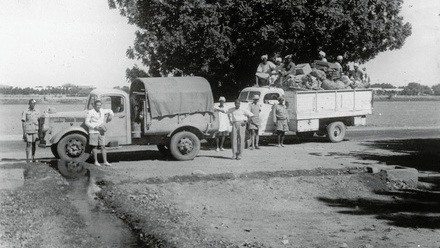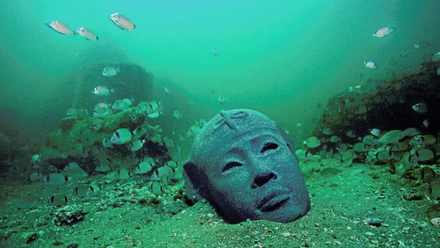Buhen: A site submerged
by Carl Graves
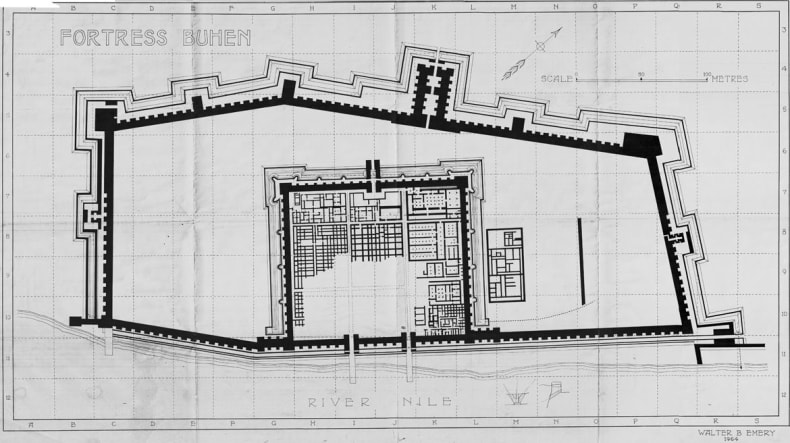
Plan of the fortress of Buhen during the Middle Kingdom after the EES excavations of 1957-64.
In 1957 Walter Bryan Emery (1903-1971) began excavations at the fortress site of Buhen in Lower Nubia (northern Sudan). His choice of site came because of the lack of opportunities in Egypt during the Suez Crisis which started the year before and put Emery’s work at Saqqara on hiatus.
Though Buhen had already been investigated by the University of Pennsylvania’s Eckley B Coxe Expedition in 1909-10, Emery felt that there was more to discover. He reopened the Penn dig house, now 50 years old, and recruited a local workforce to begin the mammoth task of clearing the ditches of the fortress.

The expedition house at Buhen. Originally constructed under the guidance of David Randall-MacIver (1873-1945) and Charles Leonard Woolley (1880-1960) in 1909, Emery organised substantial restoration to the building in 1957 and later additional features such as a drawing studio to complete his large illustrations of the site.
Fresh discoveries and imminent disaster
Within one season Emery found that the previous excavators had not cleared enough of the sand away to reveal the substantial Middle Kingdom bastioned perimeter walls surrounding the inner fortress, or the full extent of the defences around the settlement area.
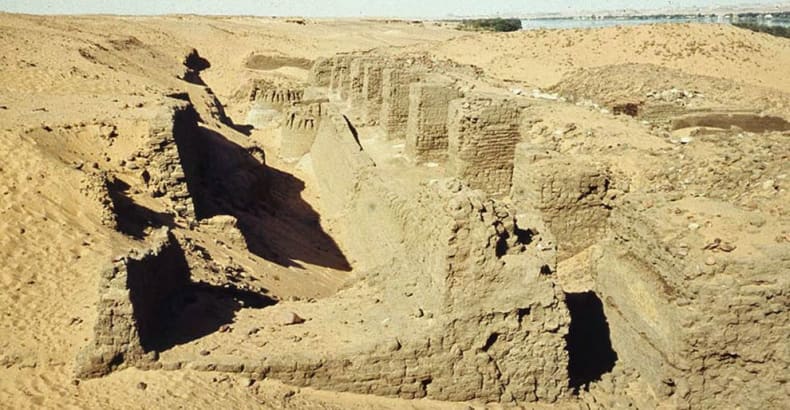
The surrounding defences of the inner fortress at Buhen after clearance by Emery’s team.
Work continued at the fortress and in 1960 news came of the imminent destruction of the site due to the planned construction of the Aswan High Dam. What had started as a routine excavation, now turned to a rescue campaign. Inaugurated on 8th March 1960, the UNESCO Campaign to Save the Monuments of Nubia resulted in an international effort to record or move archaeological sites under threat. For the UK, all operations in Nubia went through the Egypt Exploration Society, making the Buhen dig house a hub for all visitors to the region.
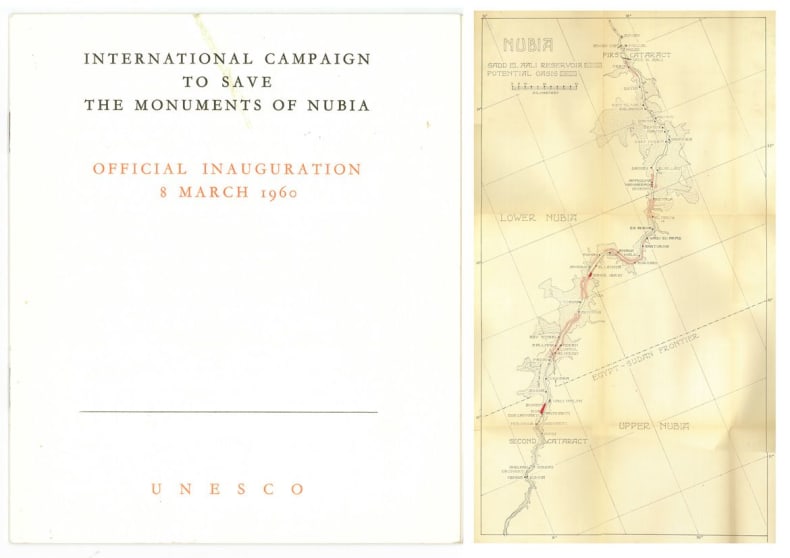
Left, a leaflet announcing the inauguration of the UNESCO salvage campaign on 8th March 1960. Right, a map of the region of Lower Nubia with an estimated region of submersion highlighted as well as concessions granted along the river.
Ricardo Caminos (1915-1992) was recruited in winter 1960 to record the 18th Dynasty temple of Buhen before it would be dismantled and moved to safety at the National Museum of Sudan in Khartoum during 1962. This task was directed by Harold James Plenderleith (1898-1997), then the Director of the International Centre for the Study of the Preservation and Restoration of Cultural Property.
During the 1961 field season, investigations 150m north of the outer fortifications uncovered a sprawling settlement stretching over 300m along the river front. Excavations in the area revealed that this town dated to the Old Kingdom and was the possible location of a copper smelting community.
In 1964, the waters building up behind the almost completed Aswan High Dam reached Buhen. The site was entirely submerged beneath the reservoir waters and rendered inaccessible. Lamenting the loss and destruction of those archaeological sites that could not be moved to safety is a reminder of the need to continue exploration of threatened environments. However, viewers of Immortal Egypt (BBC 2, 2015) will have heard Professor Joanne Fletcher remark that ‘Buhen is not entirely lost to us, thanks to the archives here at the Egypt Exploration Society’, and of course we echo those sentiments.
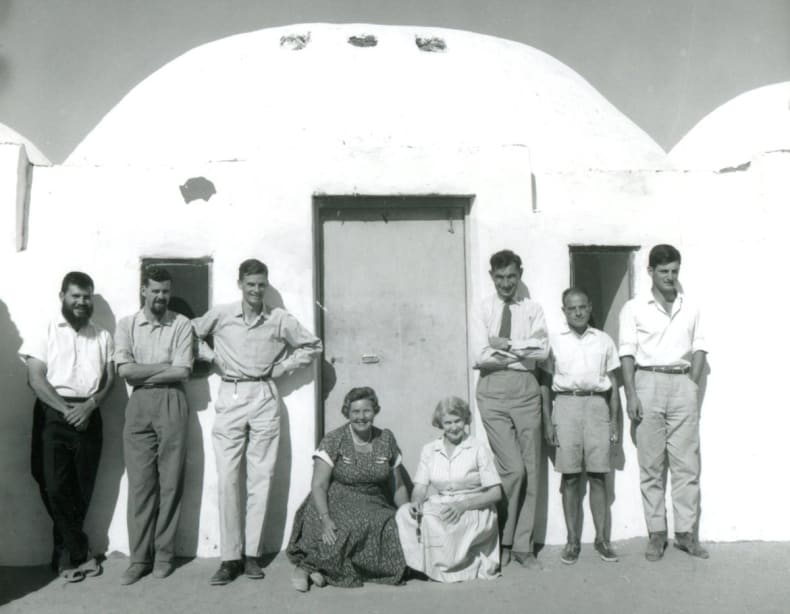
The expedition team on Christmas day 1960. Left to right: Tony Mills, David O’Connor, Robert Deane, Margaret Drower, Molly Emery, Harry Smith, Ricardo Caminos, Martin Minns.
Research potential
The Lucy Gura Archive includes hundreds of images, reports, object records, and field diaries documenting the excavations directed by Emery from 1957 to 1964. Researching in these collections provides a glimpse into the magnificent architecture preserved at Buhen and the relics of a once prosperous society living there.
Reanalysing these records has shown that, with an ever increasing knowledge of ancient Egyptian and Nubian cultural relations, new discoveries are still to be made. Thanks to the efforts of international teams working in Nubia during the UNESCO Campaign, Nubia remains one of the most archaeologically explored areas on the globe today.
Further reading and resources
BUH – Sub-archive reference code for materials relating to the Society’s work at Buhen from 1957-64 directed by Walter Bryan Emery.
UNESCO – Sub-archive reference code for materials relating to the Society’s relationship with UNESCO during the Nubian campaign.
NUB – Sub-archive reference code for materials relating to the Society’s Sondage Survey of Nubia 1961-62 directed by Harry Smith.
The Final Survey of Lower Nubia Part 1: The Egypt Exploration Society, Oral History Project
The Final Survey of Lower Nubia Part 2: The Egypt Exploration Society, Oral History Project
Randall-MacIver, D., and Leonard Woolley, C. 1911. Buhen (2 vols). Philadelphia: The University Museum, University of Pennsylvania.
Emery, W. B., Millard, A., and Smith, H. S. 1979. The Fortress of Buhen: The Archaeological Report. London: The Egypt Exploration Society.
Smith, H. S. 1976. The Fortress of Buhen: The Inscriptions. London: The Egypt Exploration Society.
Caminos, R. 1974. The New Kingdom Temples of Buhen (2 vols). London: The Egypt Exploration Society.

